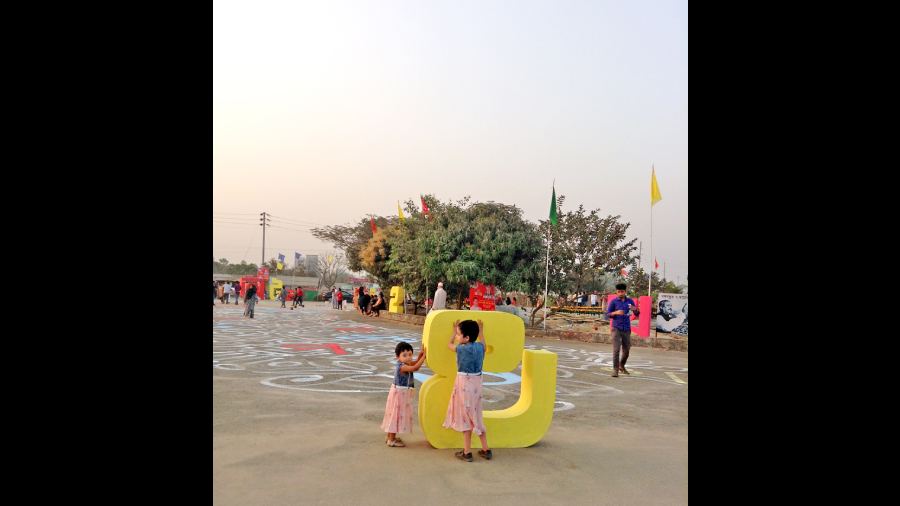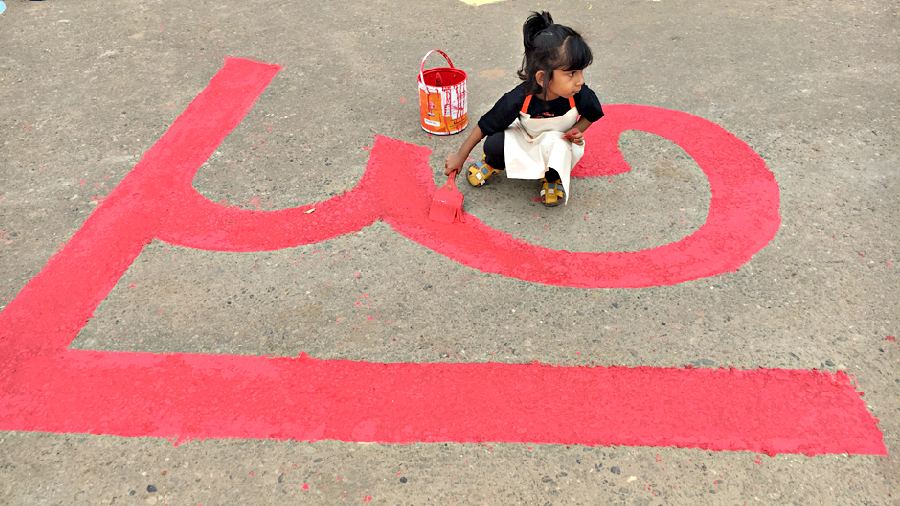Ikri mikri cham chikri
Chamey kata mojumdar
Dheye elo damodar
Damodarer hari kudi
Duarey boshey chal kuti...
The publishing house in north Dhaka takes its name from the olden Bengali nonsense rhyme chanted alongside a child’s game. Every Friday after school, children rush to Ikrimikri Book Studio.There they read books, attend story tellingsessions, play with colours and Bengali typography.
This year, Ikrimikri put up a stall in the 10th edition of the Bangladesh Book Fair hosted here in Calcutta. Some of these are new books — about local stories and folklore, Santhal and Chakmatribes and their culture and the Sunderbans and based on other books written by Bangaldeshi authors Salek Kokhon,Nikhil Chandra Das and Saidus Saklayen. Many of the titles are classics by authors such as Syed Shamsul Haq, Imdadul Haq Milan and Ahmed Riaz.
“Gone are the days when you could tell a child the story of a king who hadseven queens,” Mahbubul Haque, who is the editor and publisher of the six-year old Ikrimikri, tells The Telegraph overphone from Bangladesh.
He continues, “In today’s competitiveworld, there is a growing tendency to learn English. Bangladesh is no exception.Those who can afford to, will have their children join English-medium schools. And this after we became a nation on the basis of wanting Bangla as our national language and not Urdu.”
That is why Ikrimikri was imagined not only as a publishing house but as a place that would do its bit to re introduce Bengali to children who were otherwis ecertain to become part of a greater and continuing drifting.
“We wanted to do something with the children. They should come to the studio and exchange their ideas with us,” says Haque.
Given the studio size, not more than 10 children can come together at the same time. “They draw new things with alphabets. Sometimes they put together a letter and its mirror image side by side and make new patterns,” says Haque. Other times, there are artists who show them how an alphabet can magically transform into something else. “If you ask me, to every child a letter is a pictureand not anything more,” he adds.

Young participants at the Ikrimikri Bhasha Utsav Ikrimikri
Workshops are also organised outside the four walls of the studio. Just like New Town in Calcutta, which was once only stretch after stretch of plot waitingto be developed, in Dhaka too there is an area called Purbachal. “It still has the essence of a village but will soon lend itself to become the centre of the city,” says Haque. Here, a toron or gate called Shaheed Minar has been made by Ikrimikri with the approval of the Rajdhani Unnayan Katripakkha of the Bangladesh government. It is a steel structure erected in remembrance of the Bhasha Andolonor Language Movement of 1952.
Says Haque, “We take our children to that spot. Once, we made life-sizele tters and let them play with those.They could sit on the lap of a letter, they could lie down on it and they could touch and feel it.” Reports of these activities are published in Ikrimikri’s children’smagazine.
From his experience, Haque knows that children’s activities get very little coverage and space in “mainstream” newspapers and magazines. He says,“But this magazine is theirs. We publish their drawings, the poems they write, we publish their activities from the workshops. Bangladesh has many rivers. We publish stories related to rivers. We publish pictures of trees and flowers of our land so that these children can recognise them, know them a little better.”
In the picture book Fangshang there is a cutout of a bird with seeds in its beak. “Real seeds,” says Haque. “Iam hoping some children would haveplanted those seeds and are watching them grow.”
At the Bangladesh Book Fair in College Square, Ikrimikri’s flashcardswith Bengali letters have flown off theshelves. “It seems Bengali flashcards arenot available in Calcutta,” says Masum Mahmud, who is manning the stall. He is also the assistant editor and project coordinator of Ikrimikri. Haque says, “It is not necessary for children to get to know the letters as a part of the school syllabus. It can be an interactive play session with elders at home. We don’t need to engage them with a mobile phone.”
Haque, who was in Calcutta for thebook fair, says he was delighted to see the number of open spaces the city has. He says, “There are parks in almost every neighbourhood. If I could collaborate with some organisation in Calcutta, I would want to organise workshops in those parks. Children need to grow up with an attachment to Bengali. It has to start when they are still young.”











